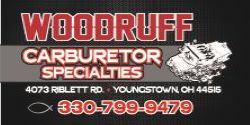Another option that I like are the petronix conversions. Two wires and jump the ballast and done. They work great. Really all about what you want to do with the car, just like a curve.
You are using an out of date browser. It may not display this or other websites correctly.
You should upgrade or use an alternative browser.
You should upgrade or use an alternative browser.
1975 ignition control module toasting another one..
- Thread starter pedal2themetal
- Start date
- Local time
- 12:02 AM
- Joined
- Oct 8, 2012
- Messages
- 6,568
- Reaction score
- 2,921
- Location
- Valencia, España
I already did, but with one MJ00005 transistor (the closer I could find, just to test for the fix) which was one I found at a local electronic shop in Venezuela. I just made the pot cut on transistor area and got success getting back to life the Module. Just need to replace it now with the NOS MJ00012 I found on eBay later.Hi rev and chrome box are 1.5 Good luck changing the transistor getting all the potting out and that also does not mean that is the problem. Chrome box is funny it tells you use a .25 ohm ballast. Run that on the street you will be pushing the car home in a day. Thats for racing only it gets the box hot but colos between runs. You can use a .8 on the street but the RPM's drop. Overrated for the price now and not needed kind of like the gold or Blue box. The hi rev never even heard of one failing and rated 7500 RPM which most people will never see over 5K RPM
The MP box is one of the laters one, so the potting was pretty much solid… and it was more like a rubberish compound.
For my build I preffer to keep the stockish system as posible.
Prices are completed ECUs..Are those prices fully assemblies ECUs? Or just transistors prices?
If full unit price, I don’t think they are expensive at all. EXCEPT if expecting a 10000% profit of course!
IMHO getting a decent stock replacement box like the later blue ones into the $25-40 price rate and good Orange replacement into $45- 60 price rate could be nice. And chromed unit similar slightly above of that.
Once again except if expecting a 10000% profit… what is mostly sure the main reason why nobody is making them.
But FOB China..
So to calaculate landed cost to the USA need to add tooling, packaging, handling, ocean freight and import duties. Then the importer will add his profit % markup to the distributor % > dealer % > retail %. Total markup to from FOB to retail is 4X or 5 X.
Just my $0.02...

Last edited:
Regarding ballast resistor value...
Keep in mind this uses an internal nichrome wire
that increases resistance when heated up..
So a mopar 0.25 ohm ballast resistor (P2444641)
can increase up to 1 ohm..
Just my $0.02...
Keep in mind this uses an internal nichrome wire
that increases resistance when heated up..
So a mopar 0.25 ohm ballast resistor (P2444641)
can increase up to 1 ohm..
Just my $0.02...

Geoff 2
Well-Known Member
Yes, Nichrome wire, but it does not quadruple it's resistance when it heats up.....
Using THAT logic, the std 0.5 ohm bal res would be 2 ohms when hot & the stock 1.5 ohm coil would only be working on 5 volts.
Using THAT logic, the std 0.5 ohm bal res would be 2 ohms when hot & the stock 1.5 ohm coil would only be working on 5 volts.
Geoff 2
Well-Known Member
Nacho,
Have never seen a recommendation from Chrys to use any Blaster coil with their ECUs.
Because C used fixed dwell in their ECUs, the coil & components got very hot when used with coils using the 0.25 ohm bal res. At low rpms, the coil is switched 'on' for a longer time period....& heats up. As rpm increases, coil is on for a shorter time period...& runs cooler. Hence the warning from C not to run under 3000 rpm for proloned periods with some coil combinations.
Trading high tension voltage for current is a baaaad idea. First, you get a shorter duration spark. Second, it is the heat [ current ] in the spark that ignites the mixture, not voltage.
Have never seen a recommendation from Chrys to use any Blaster coil with their ECUs.
Because C used fixed dwell in their ECUs, the coil & components got very hot when used with coils using the 0.25 ohm bal res. At low rpms, the coil is switched 'on' for a longer time period....& heats up. As rpm increases, coil is on for a shorter time period...& runs cooler. Hence the warning from C not to run under 3000 rpm for proloned periods with some coil combinations.
Trading high tension voltage for current is a baaaad idea. First, you get a shorter duration spark. Second, it is the heat [ current ] in the spark that ignites the mixture, not voltage.
- Local time
- 12:02 AM
- Joined
- Oct 8, 2012
- Messages
- 6,568
- Reaction score
- 2,921
- Location
- Valencia, España
Never said Chrysler recommending Blaster coil, but their own old MP coil is the same Blaster II coil and its description says to be used with Mopar Ignition systems… but some cases 1/4 ohms ballast required
On a 1 usually from .8-1.0 HOTYes, Nichrome wire, but it does not quadruple it's resistance when it heats up.....
Using THAT logic, the std 0.5 ohm bal res would be 2 ohms when hot & the stock 1.5 ohm coil would only be working on 5 volts.
Note that the amount of resistance increase through the ballast resistor is based on multiple factors including run time, temperature, input voltage plus the construction makeup of the nichrome wire for the % of aluminum/copper/steel used. For the mopar 0.25 ohm ballast resistor (P2444641) in my RoadRunner, I have not measured the actual resistance of the resistor under operating conditions but did measure the input and output voltages @ the ballast resistor terminals after running the car for about an hour. The input voltage was 13.2V and output voltage was 9.8V, so the actual voltage drop was 3.4V or 26%.Yes, Nichrome wire, but it does not quadruple it's resistance when it heats up.....
Using THAT logic, the std 0.5 ohm bal res would be 2 ohms when hot & the stock 1.5 ohm coil would only be working on 5 volts.
Just my $0.02...

Bee1971
Well-Known Member
P4120889Cool… if that’s true (and I’m not saying is not) why they were offering them to be matched with Mopar performance ignition systems even with 1/4 ohms (to some cases)?
Mopar Performance P4876732
And also… what are the specs of the coils from the Chart? Specifically the P4120889…
I forgot about the ole Accel Super Coil that Mopar had a part # for
Then all the different ballast resistors used with this coil
from those charts posted
.5 OHM
.7 OHM
.8 OHM
Chrome or Orange ECU
Then you read the description and it says to use 1.0 OHM
| A. Ignition Coil, High Performance For all 12-volt applications. Not recommended for engine speeds over 6,500 pm. Use 1-ohm ballast resistor P5206436. 1 P4120889 Coil , Ignition |
Enjoy the pictures from the Mopar Performance Catalog
Last edited:
- Local time
- 5:02 PM
- Joined
- Jul 1, 2015
- Messages
- 5,888
- Reaction score
- 7,437
Which alloy of Nichrome wire are you referring to....there are several grades....each is different with different characteristics ?......Yes, Nichrome wire, but it does not quadruple it's resistance when it heats up.....
Using THAT logic, the std 0.5 ohm bal res would be 2 ohms when hot & the stock 1.5 ohm coil would only be working on 5 volts.
BOB RENTON
Are we still talking about toasters , model rocket ignitors and dental restorations ??Which alloy of Nichrome wire are you referring to....there are several grades....each is different with different characteristics ?......
BOB RENTON
Bee1971
Well-Known Member
Are we still talking about toasters , model rocket ignitors and dental restorations ??
The Capitan
Well-Known Member
What are your thoughts on Scotch locks?
Which alloy of Nichrome wire are you referring to....there are several grades....each is different with different characteristics ?......
BOB RENTON
What are your thoughts on Scotch locks?

- Local time
- 5:02 PM
- Joined
- Jul 1, 2015
- Messages
- 5,888
- Reaction score
- 7,437
None of the above....someone mentioned nichrome wire....which alloy?? The common type is 80/20 % nichrome (nickel/chrome) but did you have a specific alloy in mind?? As they have different resistive characteristics and respond differently. ....just curious.....Are we still talking about toasters , model rocket ignitors and dental restorations ??
BOB RENTON
- Local time
- 5:02 PM
- Joined
- Jul 1, 2015
- Messages
- 5,888
- Reaction score
- 7,437
Depends on the wires size and current ratings....
BOB RENTON
pedal2themetal
Well-Known Member
HI,
I think I'm just going to go back to stock stuff with new ICM , coil and resistors. On the duel resistors How do I know which is which and which wires to connect to which in case there are wrong now/?
I think I'm just going to go back to stock stuff with new ICM , coil and resistors. On the duel resistors How do I know which is which and which wires to connect to which in case there are wrong now/?
Similar threads
- Replies
- 10
- Views
- 1K
- Replies
- 4
- Views
- 1K
- Replies
- 36
- Views
- 3K
















